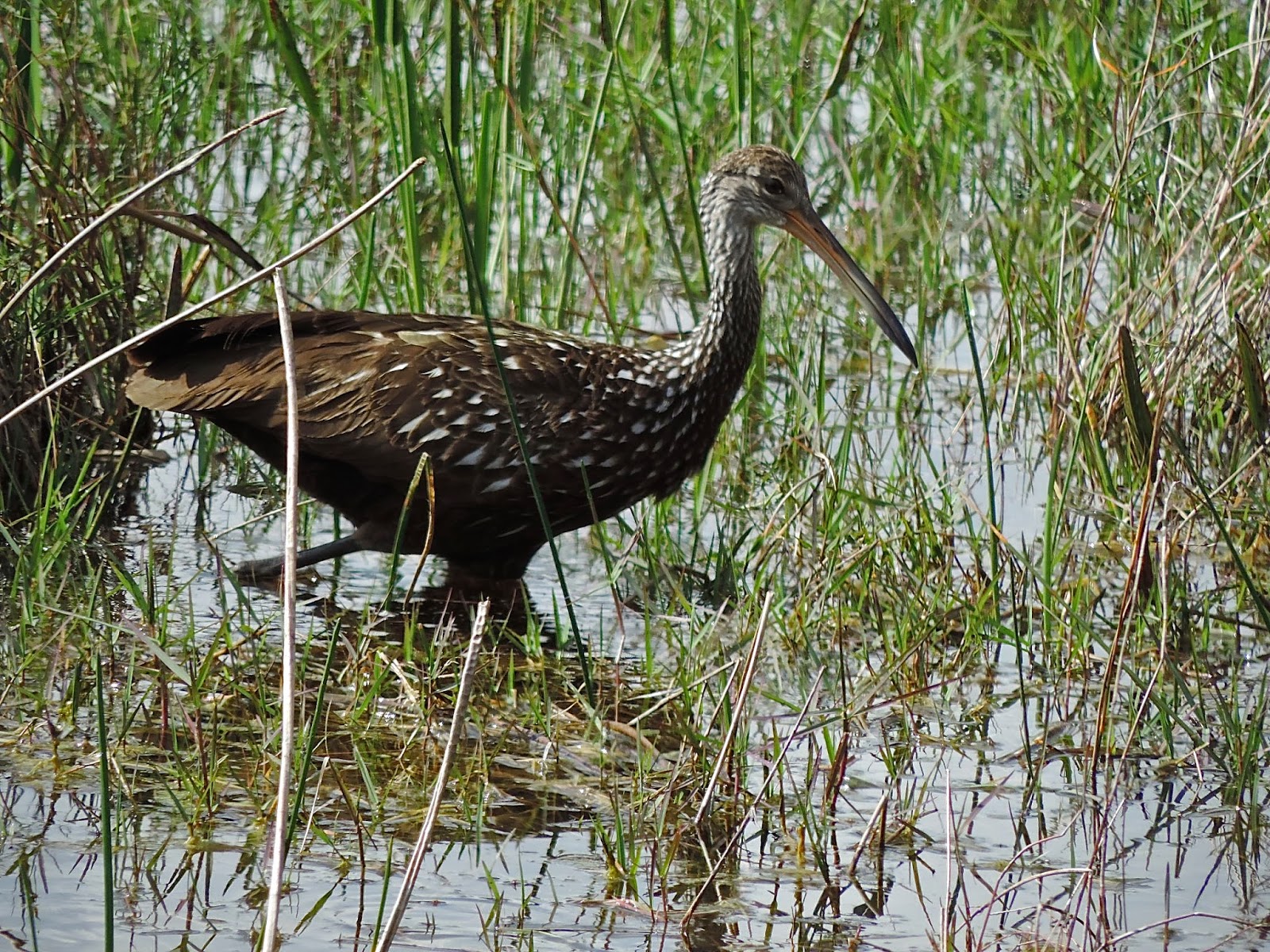I left Miami early and thought perhaps I could wait out the morning commuter traffic at a Starbucks, but it was still busy when I left, all the way to the 145,000-acre Arthur R. Marshall Loxahatchee NWR. Erroneously, I got in an express lane for several miles and will probably get a ticket. I was also on a toll road on Saturday for a few miles, which is monitored by one's license plate. I'll get a bill for that also....eventually.
Ger had warned me of the congestion going north on US1. After what seemed forever, I finally merged onto Interstate 95, and really, these roads are efficient. I don't particularly like to drive them for long distances, but when the alternative is stop-and-go driving that takes twice or three times as long, this option becomes more attractive. The best alternative routes in non-urban areas are the old major roads that run parallel (within 30 miles or so) of an Interstate and which are now seldom used by travelers.
Arthur R. Marshall, who died in 1985, was an ardent conservationist and became a strong advocate specifically for preservation of the Everglades. The refuge named in his honor is an Everglades refuge but is right on the eastern edge, and its boundaries are suburbia, gated communities and agricultural enterprises. There is an powerful and important entity called the South Florida Water Management District with whom this refuge cooperates concerning the canals, levees and pumps built by the Army Corps of Engineers. It's all about the water.....(and in Florida, as in most parts of the country, this historically meant water for farmers and people, not for flora and fauna.)
 |
| ARM Loxahatchee NWR - FL |
(It is interesting and pertinent to listen to and read about the current issues regarding President Obama's wish to expand a Wilderness designation in the Arctic National Wildlife Refuge. The status of Wilderness means no mining, drilling, logging or permanent roads, altering of landscape, etc. The land is not to be disturbed by man.)
A 0.4-mile loop boardwalk, adjacent to the large Visitor Center, meanders through a cypress swamp. I learned a new word: thigmotropism, meaning when a cypress tree comes in contact with another object like a deck edge or piling, the tree grows around that object. Cypresses were tall and the ferns huge; the habitat was warm, green and sun-dappled, swampy, mossy and very quiet....a tangled beauty. The trees here are the "largest remaining remnant of a cypress strand that once separated the pine flatwoods in the east from the Everglades marshes." (Wikipedia). There is also a 5.5-mile canoe trail into the Everglades.
 |
| White Ibis - ARM Loxahatchee NWR - FL |
The refuge manages wetlands and works to remove invasive species, a serious problem here, the "three most problematic exotic plant species on the refuge [being] melaleuca, Brazilian pepper, and Old World climbing fern (lygodium). "
I drove to the nearby open wetlands where warblers and vireos were flitting in the trees in the parking lot (many Palm Warblers now along with Yellow-rumps) and then slowly walked a mile around one of the impoundments. I was rewarded by seeing the second Limpkin of my life and another Purple Gallinule.
 |
| Limpkin at ARM Loxahatchee NWR - FL |
A mother and two small boys, aged about 3 and 5, were also walking the square. The little boys had binoculars around their necks. "We saw a snake skin! In that plant over there!...These are our Dad's binoculars; we 'brunged' them...." Their mom had a camera and was pushing a stroller.
I stayed that night at Jonathan Dickinson SP where the ranger assigned me what apparently was the last campsite, a spot out in the open in the midst of RVs, but very pleasant. I heated a rice-bean thing for dinner. It sufficed but didn't exactly satisfy. The skies were clear; it was a beautiful night. The guys in the adjacent site watched TV which they had set up outside. Most RV campers settle in with their stuff like clotheslines and stoves, chairs and rugs, lights and flags and other decorative objects, and dogs and bicycles. Good for them....
No comments:
Post a Comment